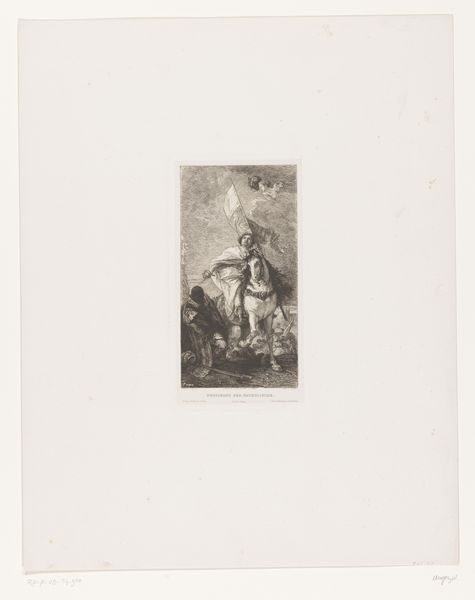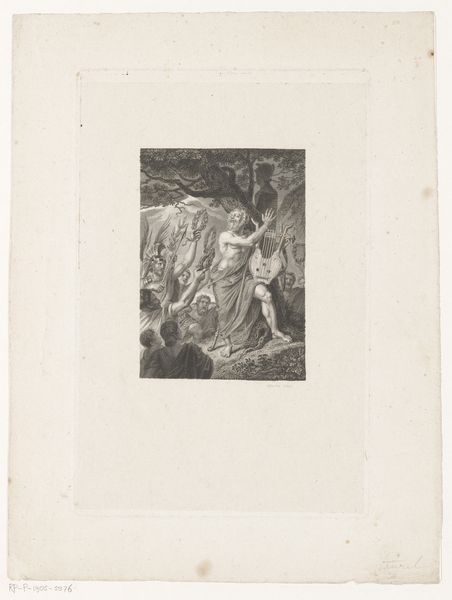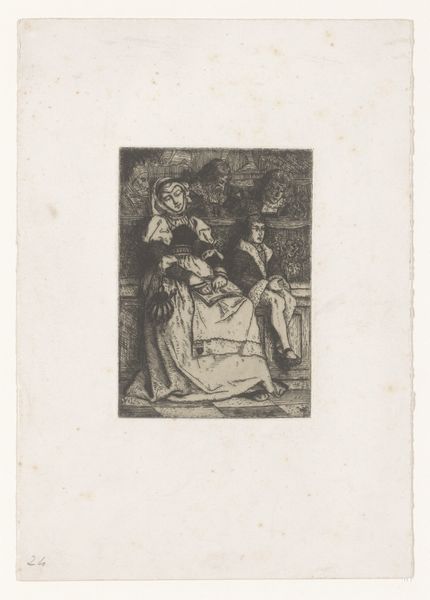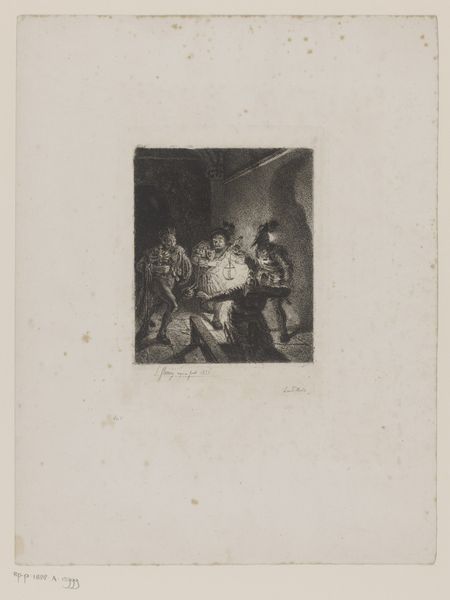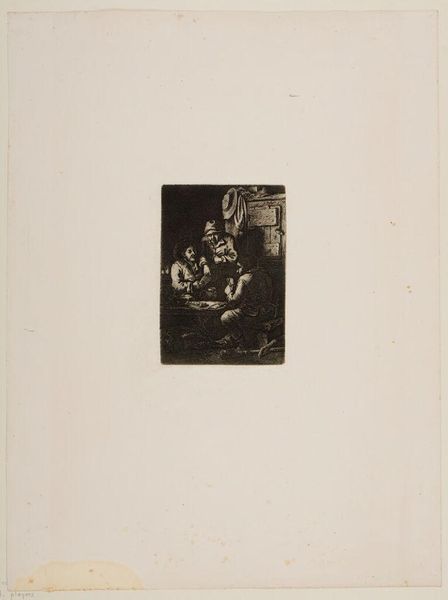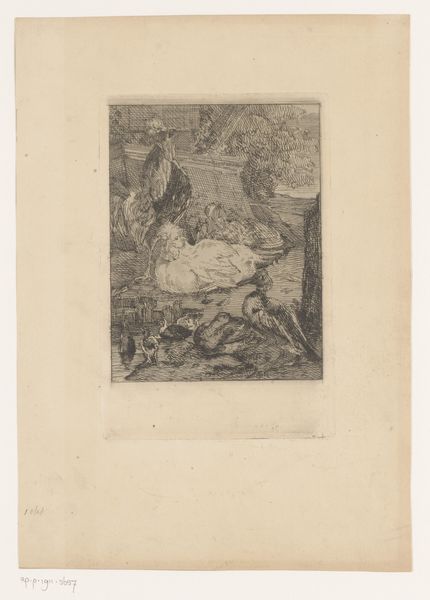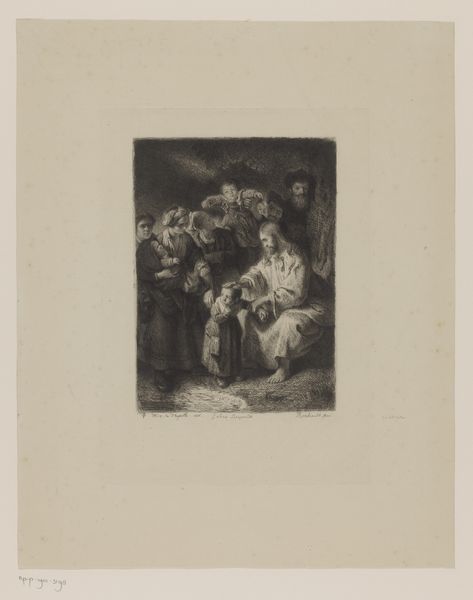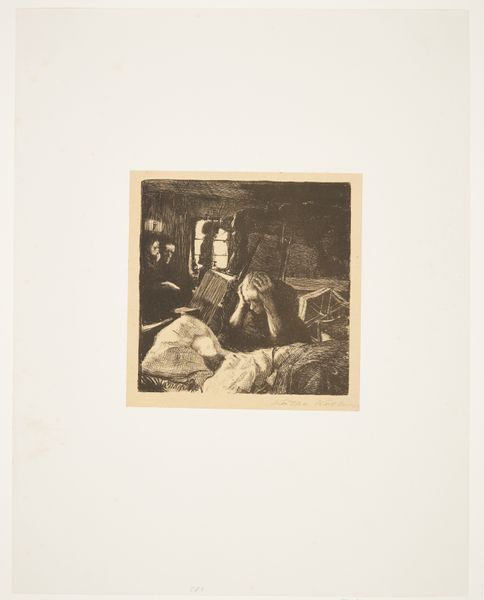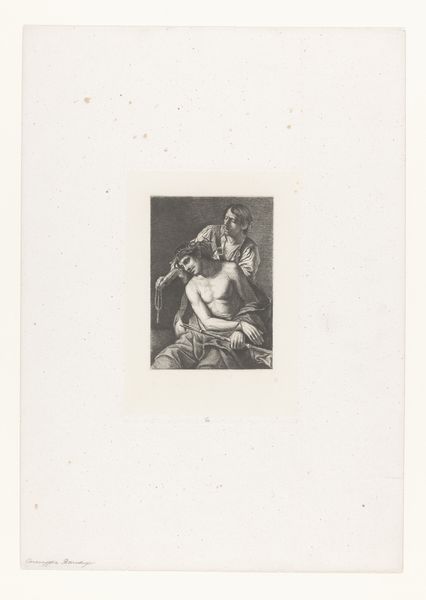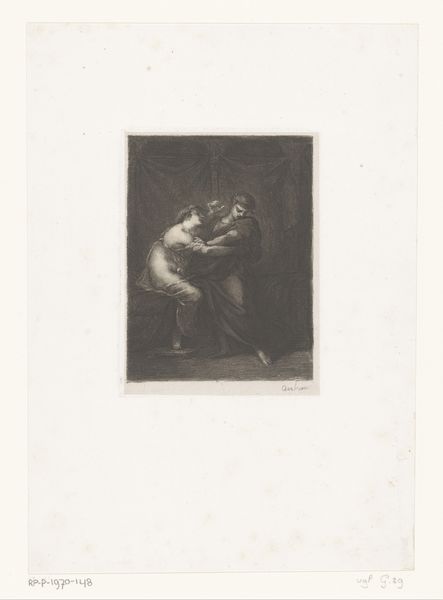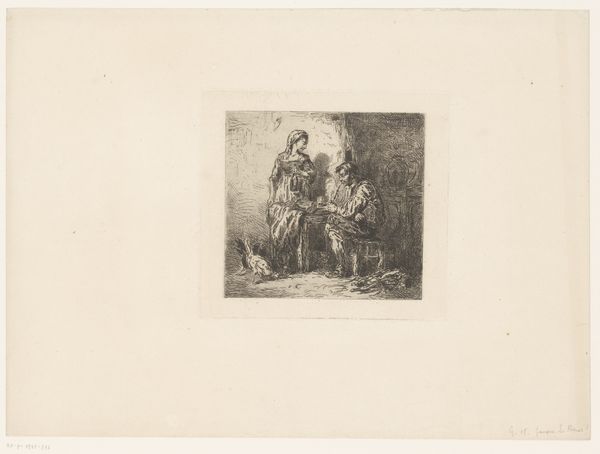
print, etching
#
narrative-art
# print
#
etching
#
figuration
#
romanticism
#
history-painting
#
academic-art
#
realism
Dimensions: height 389 mm, width 265 mm
Copyright: Rijks Museum: Open Domain
Curator: Charles Billoin created this print, "Boetedoening van Jane Shore," in 1848. It’s an etching. What's your immediate impression? Editor: Stark. Utterly stark. There's this desaturated tone, all grayscale, that contributes to an overwhelming feeling of cold isolation. The figures looming in the background don't offer much warmth, either. Curator: That feeling definitely aligns with the historical subject matter. Jane Shore, mistress of King Edward IV, was forced to do public penance after his death. Think about the labor involved in creating the plate for this print. Each line etched, each shadow carefully considered, contributing to the mood. It's all physical process manifesting in emotional impact. Editor: The positioning of Jane, kneeling and almost pressed against a large pillar, emphasizes vulnerability. It almost seems that she is hiding, trying to disappear into that huge, hard piece of stone. She clasps her hands together, which is of course the historical symbol for begging, appealing, and atonement. Curator: I agree; even her attire or lack of, underscores the narrative being a visible representation of both physical and social exposure, reduced to her basic, bare self, open to consumption. Editor: Absolutely. Notice, too, how the crowd behind her is cast into shadow, mostly just suggestion. It enhances the dramatic effect; Jane becomes this small figure battling not just individuals, but an entire looming societal judgment represented as shadow and mass. The faces and figures of the crowd behind Jane also add an element of voyeurism, the people watch to watch and relish the pain. Curator: Exactly! It is worth considering the economic viability and purpose of pieces such as this in 1848 and who purchased these types of printed artworks, also noting its accessibility as a means of production and how it reaches a market with little cost. Editor: It’s such a powerful confluence of symbols: penitence, societal judgment, vulnerability. Curator: Exploring it through the materials and how the work comes into the world gives the historical drama resonance for how society still puts women in this position. Editor: And exploring that story with imagery brings to light some historical moments that are often untold through visual art and shared experiences.
Comments
No comments
Be the first to comment and join the conversation on the ultimate creative platform.
